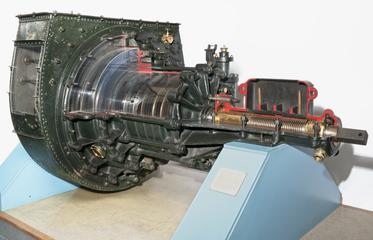
Turbinia
- occupation:
- Experimental steam turbine ship
- Nationality:
- British
1892-1893 - extensive model tests and designs created by Charles Parsons in order to demonstrate his steam turbine engines. 1894 - the vessel, called simply Experimental Launch, was launched without publicity. 1895 - following disappointing test results, Parsons changed the propeller system from a single shaft to three with multiple propellers. 1896 - the three ‘parallel flow’ turbines were installed, minor modifications to air pumps etc. were carried out and three propellers, 18 inches in diameter and of one pitch ratio, were fitted on each shaft (making nine in all). 1897 - captained by Christopher J. Leyland, Turbina gatecrashed Queen Victoria's Diamond Jubilee Naval Review at Spithead, causing an uproar and much publicity. 1900 - performed high speed demonstrations on the Seine during the Paris Exhibition. 1902 the last change was made in her basic form, single propellers of 28 inch diameter and pitch replacing the triple screws on each shaft. 1907 - was due to accompany the liner R.M.S. Mauretania on her trial trip, but could not proceed all the way due to mechanical failure. 1926 - offered to the Science Museum (London) who, through space limitations, could only take the aftermost 45 feet and so the ship was cut in half, the forepart of the vessel remained at the Parson's works. 1944 - the forepart was presented to Newcastle Corporation for exhibition in their Municipal Museum of Science and Engineering. 1959 - following a reorganisation, the Science Museum returned the back section, which, along with the forepart, was housed in a specially designed annex of the Newcastle Exhibition Park. 1961 - extensive work to combine the two sections with a newly constructed centre. 1983 - complete reconstruction was undertaken. 1996 - was put on display at Newcastle's Museum of Science and Engineering (later renamed The Discovery Museum).